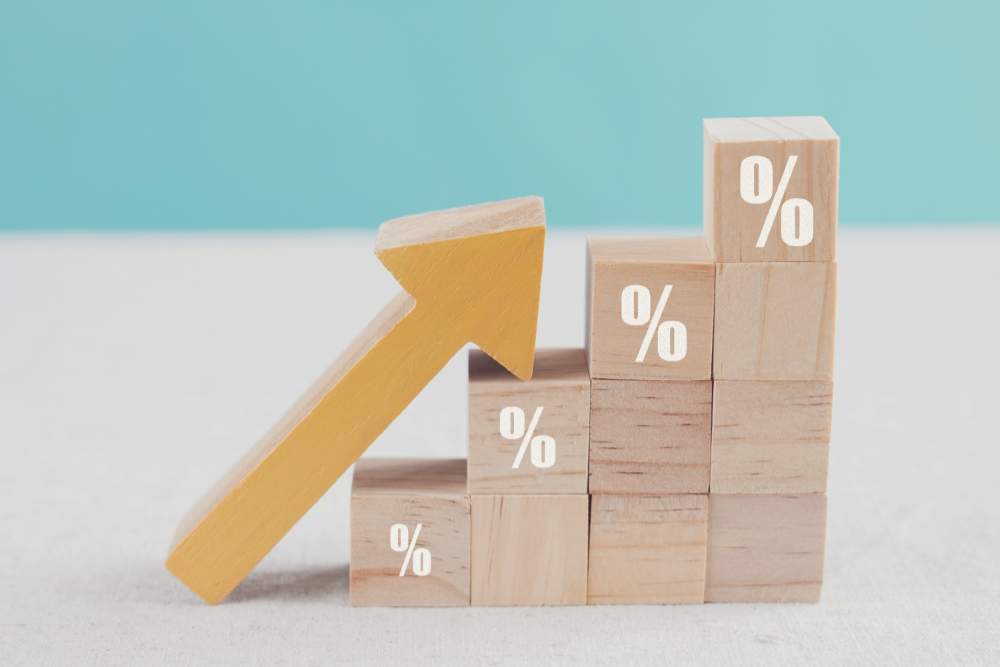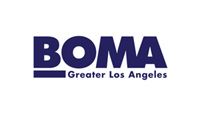
Wooden blocks with percentage sign and arrow up, financial growth, interest rate increase, inflation concept
Inflation has jumped nearly 7% in one year alone.
This spike is the largest increase in inflation the country has endured since 1982. The cost of everything is up, ranging from food to automobiles and housing. Though the Federal Reserve initially characterized inflation as “transitory” in that it would eventually dissipate and possibly even give way to deflation, the exact opposite appears to be occurring.
Inflation continues to increase with each passing month, creating significant economic problems for everyday people as well as businesses and those who work in the commercial real estate space. Unfortunately, Federal Reserve Chairman Jerome Powell has indicated that ongoing inflation is likely to last much longer than he and his fellow economists originally predicted. Let’s take a look at the significance of prolonged inflation in the context of commercial real estate.
Inflation is Important to Consumers and Commercial Real Estate Professionals
There is a common misconception that inflation is only relevant in the context of consumer prices. Inflation is certainly important when it comes to the cost of groceries, gasoline and other consumer staples. However, inflation is also important in terms of real estate. In particular, inflation has a significant impact on commercial real estate.
Inflation plays an important role in interest rates as well as market share.
Heightened materials costs make it that much more challenging for developers to build new commercial real estate structures. The Federal Reserve hikes interest rates in an attempt to keep inflation under control, ultimately making it that much more difficult to borrow money. The Federal Reserve increased the interest rate one-quarter of a point yesterday, March 16, 2022. However, interest rates are likely to increase half a dozen times across the ensuing year, meaning it will prove that much more costly to borrow money to build commercial real estate structures.
Chairman Powell’s admission that there is the potential to hike rates upwards of six times within a year’s span is somewhat worrisome as the original expectation was a maximum of three interest rate hikes between 2022 and 2024. The combination of elevated interest rates and rising inflation has the potential to result in slower commercial development as well as fewer total commercial developments being erected throughout the local market and the country as a whole.
The slower pace of commercial real estate development ultimately means current commercial real estate owners will be able to maintain more market share as fewer competing buildings will open their doors in the year ahead. The end result is current real estate owners maintaining a significant competitive advantage when establishing real estate terms and rental rates.
Will Commercial Real Estate be Used as a Hedge Against Inflation?
Purchasing commercial real estate and other assets aside from traditional investment securities makes it that much easier to hedge against the devaluation of the dollar amidst inflation. Inflation typically sends stocks, mutual funds, ETFs and other securities downward yet the devaluation of money makes commercial real estate and other forms of real estate that much more valuable. It is quite possible that rampant inflation will send the value of commercial real estate higher and higher, rising at the same pace as inflation or an even faster pace.
Keep in mind, most commercial real estate investors locked in fixed interest rates on loans taken out to acquire those properties, meaning ongoing inflation that hikes the property’s value has the potential to offset the money lost in loan interest. It is even possible that inflation will climb to the point that it outpaces the money lost resulting from loan interest.
Inflation’s Significance in the Context of Leasing Supply and Demand
Supply and demand are two important factors that influence the overarching economy. The rapid rate of inflation is partially the result of diminished supply stemming from supply chain snags along with ever-increasing demand. Building materials such as lumber and even human labor are become more scarce, meaning they are proving that much more costly.
The hike in the cost of building materials and labor has the potential to prompt commercial real estate developers to slow or even halt the construction of new properties. The resulting reduction in building supply spikes the demand for current commercial real estate properties all the more, meaning there is the potential for commercial tenants’ rental rates to increase.
Ongoing inflation also has the potential to spur commercial real estate owners to offer leases that are shorter in term. A commercial real estate lease with a shorter team reduces occupancy stability yet it can also be a boon for property owners as it presents an opportunity to increase rental rates at shorter intervals than normal.
Inflation is Likely to Continue Through 2022
President Joe Biden and Federal Reserve Chairman Powell have admitted inflation won’t cool down for several financial quarters. Both men have indicated inflation has the potential to continue all the way through the end of 2022 and possibly continue rising through the initial financial quarters of 2023. Though continuing inflation is a negative for consumers, it has the potential to be a net positive for commercial real estate owners for the reasons indicated above.


